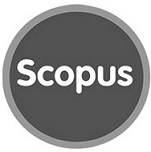Historical ethnobotany of Criollos groups from Argentina III. Taxonomic identification and analysis of non-medicinal data from Eastern Chaco found in the 1921 National Survey of Folklore
DOI:
https://doi.org/10.30972/bon.2712984Keywords:
Criollos, Historical ethnobotany, Humid Chaco, NE ArgentinaAbstract
The aim of this study is to identify, update and analyze ethnobotanical data from Criollos groups of Eastern Chaco found in the 1921 National Survey of Folklore. Since plants were named by their vernacular names, the scientific nomenclature is estimated on the basis of an exhaustive bibliographic research. A total of 1242 ethnobotanical data were registered and assigned to 308 botanical taxa referred through 294 vernacular names. For the last ones, a plausible taxonomic identification could be found in 1565 bibliographic reports. Results show that 2/3 of these data (814) correspond to medicinal plant uses, while the remaining (428) became the objective of this study. Most of them (120 data, 78 taxa) refers to religious meanings of plants, construction uses (55, 47 taxa), cultigens (52, 52 taxa), and food (47 data, 38 taxa). Other use-categories show minor proportions. This article discusses many issues about this data characterization and concludes that it constitutes the major contribution to the ethnobotany of the Criollos of the Eastern Chaco up to the present, for both its quantity as their qualityDownloads
Download data is not yet available.
Downloads
Published
2018-06-26
How to Cite
Scarpa, G. F., & Rosso, C. N. (2018). Historical ethnobotany of Criollos groups from Argentina III. Taxonomic identification and analysis of non-medicinal data from Eastern Chaco found in the 1921 National Survey of Folklore. Bonplandia, 27(1), 31–57. https://doi.org/10.30972/bon.2712984
Issue
Section
Original papers
License
Declaration of Adhesion to Open Access
- All contents of Bonplandia journal are available online, open to all and for free, before they are printed.
Copyright Notice
- Bonplandia magazine allows authors to retain their copyright without restrictions.
- The journal is under a Creative Commons Attribution 4.0 International license.















.jpg)


